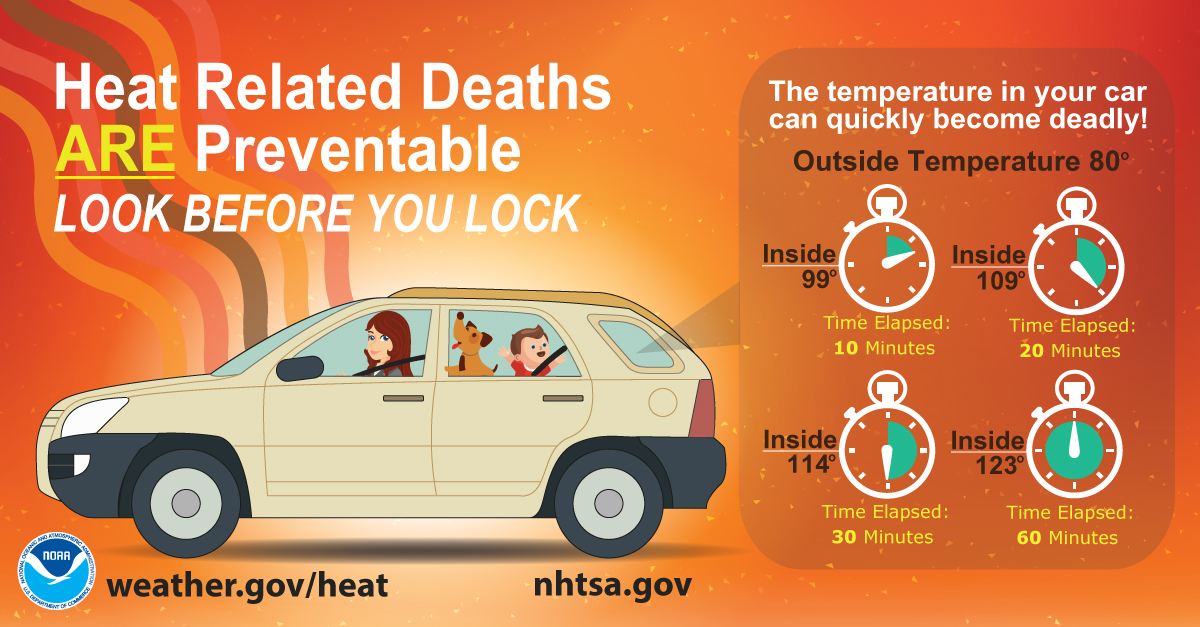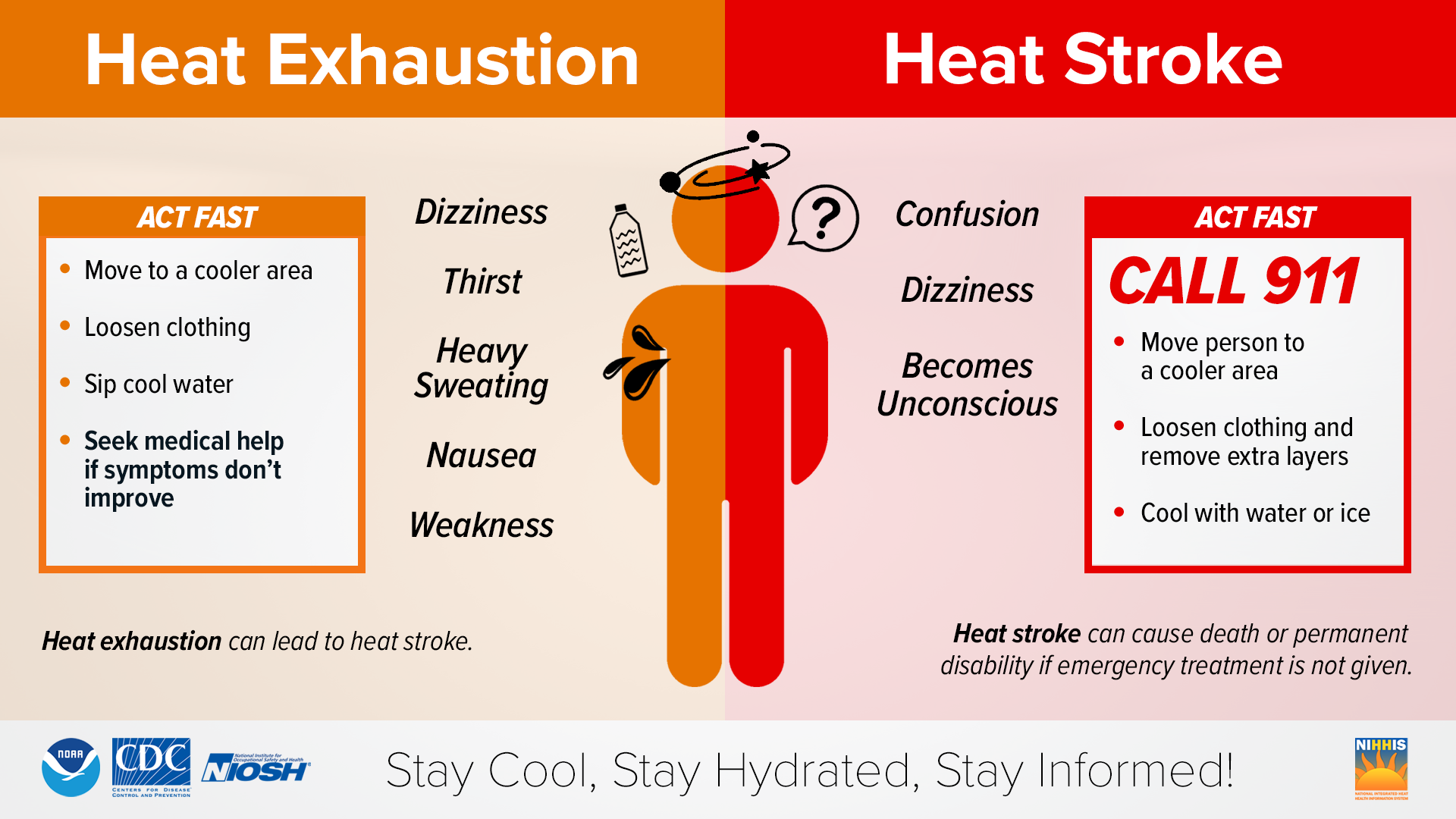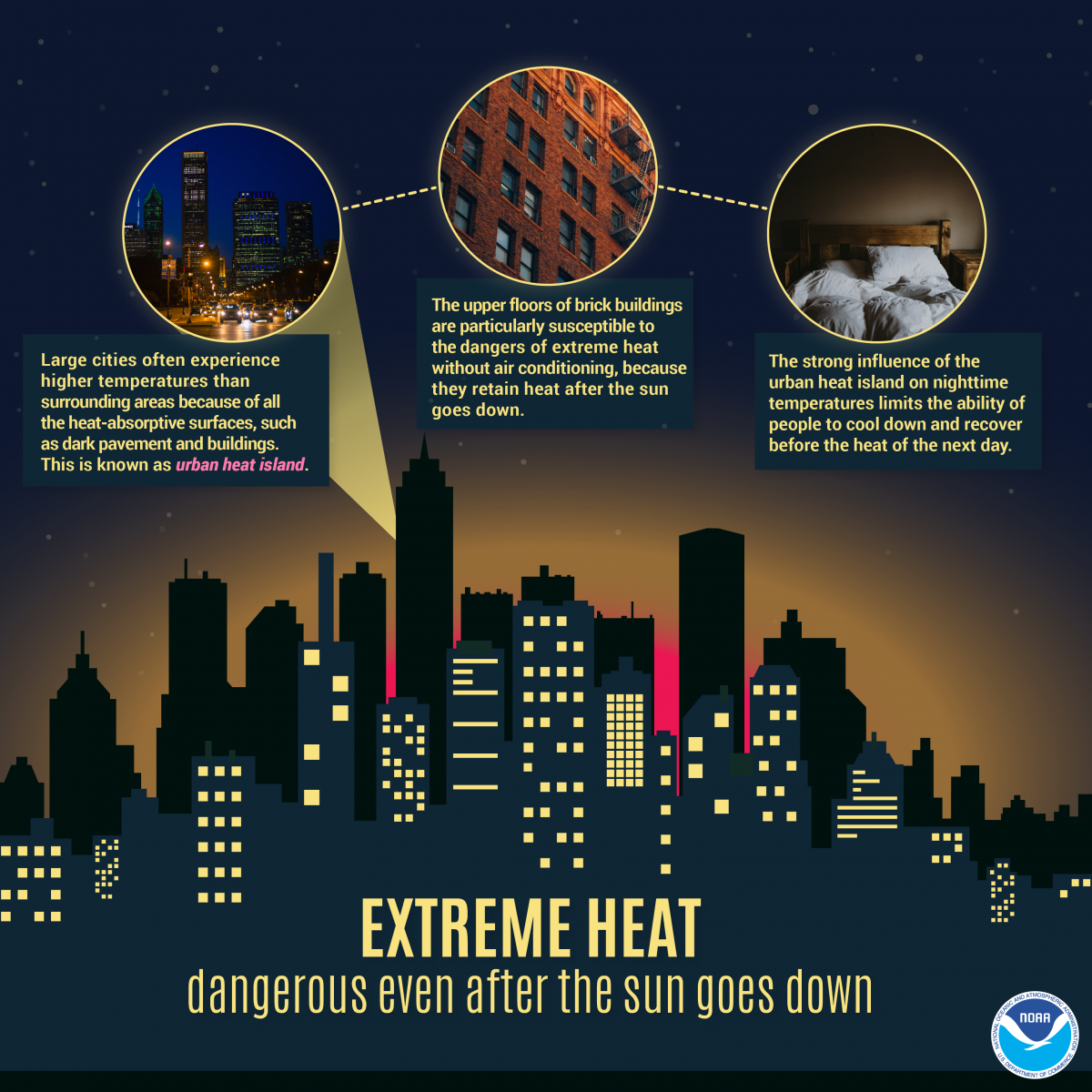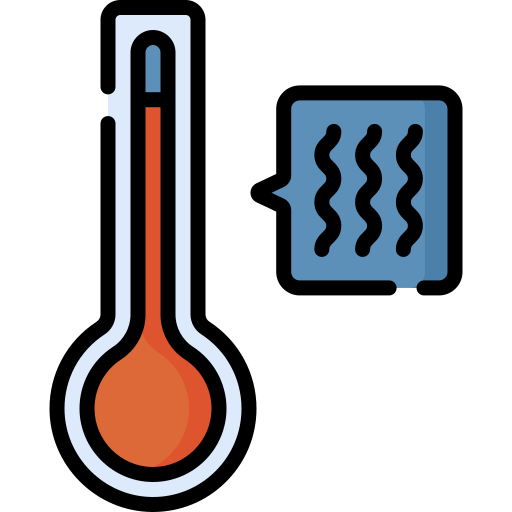Extreme Heat

HEAT-RELATED DEATHS ARE PREVENTABLE
- Prevent heat-related illness by staying cool, staying hydrated, and knowing the symptoms of overheating!
- Young children, infants, older adults, pregnant women, and those who work outside are most at risk.
| QUICK LINKS | |||
| Community Health News | Disease Directory | Resources | |
| Tools | Stay Cool | Stay Hydrated | Know the Signs |
| QUICK LINKS: | |
|---|---|
| JUMP TO: |
- According to NoHeatStroke.org*, 15 children in Kansas have suffered from Pediatric Vehicular Death.
- Please review and share these safety tips.
- It is NEVER safe to leave a child, disabled person, or pet locked in a car!
- If you see an unattended child or pet in a hot vehicle, CALL 911!

If you see a child or animal locked in a hot car:
- Call 911.
- Get them out (Kansas has laws to protect people and animals in hot cars).
- Stay until authorities arrive.
- In Kansas, check your local weather, or
- Download the OSHA-NIOSH Heat Safety Tool app (pictured below): For Apple* | For Android*
- Other States: Find a Cooling Center by State*

People living in cities may experience higher temperatures due to the effect of heat islands.
Heat islands occur due to buildings, streets, and sidewalks, making cities feel 2-22 degrees higher than rural areas.
Learn more about heat islands here*.
Seek shade:
Get under cover when the sun’s rays are strongest between 10 am and 4 pm
Wear protective clothing:
- A wide brimmed hat, and UV-blocking sunglasses
- Light colored, lightweight, tightly woven, loose-fitting clothing are best
- Apply sunscreen generously with an SPF of 30 or higher
- Apply 15 minutes before going outside and reapply every two hours, or after swimming, sweating, or toweling off.
Check the UV index daily:
The higher the UV index, the more you should do to protect yourself.
- Spend more time indoors if possible
- Take frequent breaks
- Rest in cool, shady areas; use misters or spray bottles with water in them
See below for a list of common heat illnesses, the symptoms, and what you should do.
Keep the CDC's Heat-related Illnesses (English | Spanish) poster handy.
- Abnormal thinking or behavior (agitation, confusion, etc.)
- Feeling faint or anxious
- Headache
- Loss of consciousness
- Loss of appetite
- Pale, moist skin
- Slurred speech
- Seizures
- Vomiting
- Weakness and fatigue


Heat Illnesses
| Types of Heat-related Illness | Symptoms | First Aid |
|---|---|---|
| Heat Stroke |
|
|
| Heat Exhaustion |
|
|
| Rhabdomyolysis |
|
|
| Heat Syncope |
|
|
| Heat cramps |
|
|
| Heat rash |
|
|
| Reproduced from About Heat and Your Health (CDC) | ||
Don't forget about your pets!
Signs of heatstroke in pets, include heavy panting, glazed eyes, a rapid heartbeat, difficulty breathing, excessive thirst, lethargy, fever, dizziness, lack of coordination, profuse salivation, vomiting, a deep red or purple tongue, seizure and unconsciousness.
If the animal shows symptoms of heatstroke, take steps immediately to gradually lower the body temperature and contact your veterinarian as soon as possible.
- Call 911
- Get them out (Kansas has laws to protect people and animals in hot cars.)
- Stay until authorities arrive.

If you or someone you know is experiencing difficulty caring for your pet, please reach out to Sedgwick County Animal Control. Options are available for persons in domestic violence situations, persons entering military deployment, and persons in transitional situations. Please call 316-660-7070 to ask about referral options.
* External Link
Sources: No Heat Stroke; Ready.gov; Center for Disease Control & Prevention (CDC) Heat Health; National Weather Service; FEMA; National Oceanic and Atmospheric Administration (NOAA): Heat Index; National Center for Healthy Housing ; National Highway Traffic Safety Administration;


